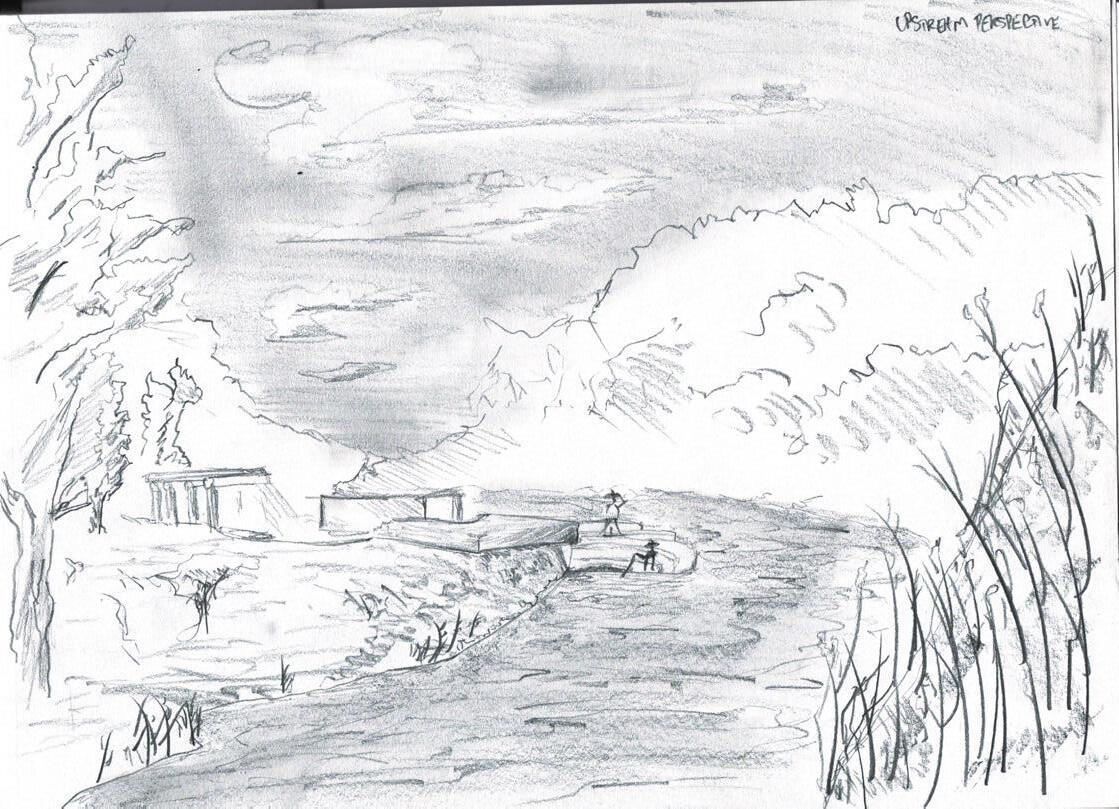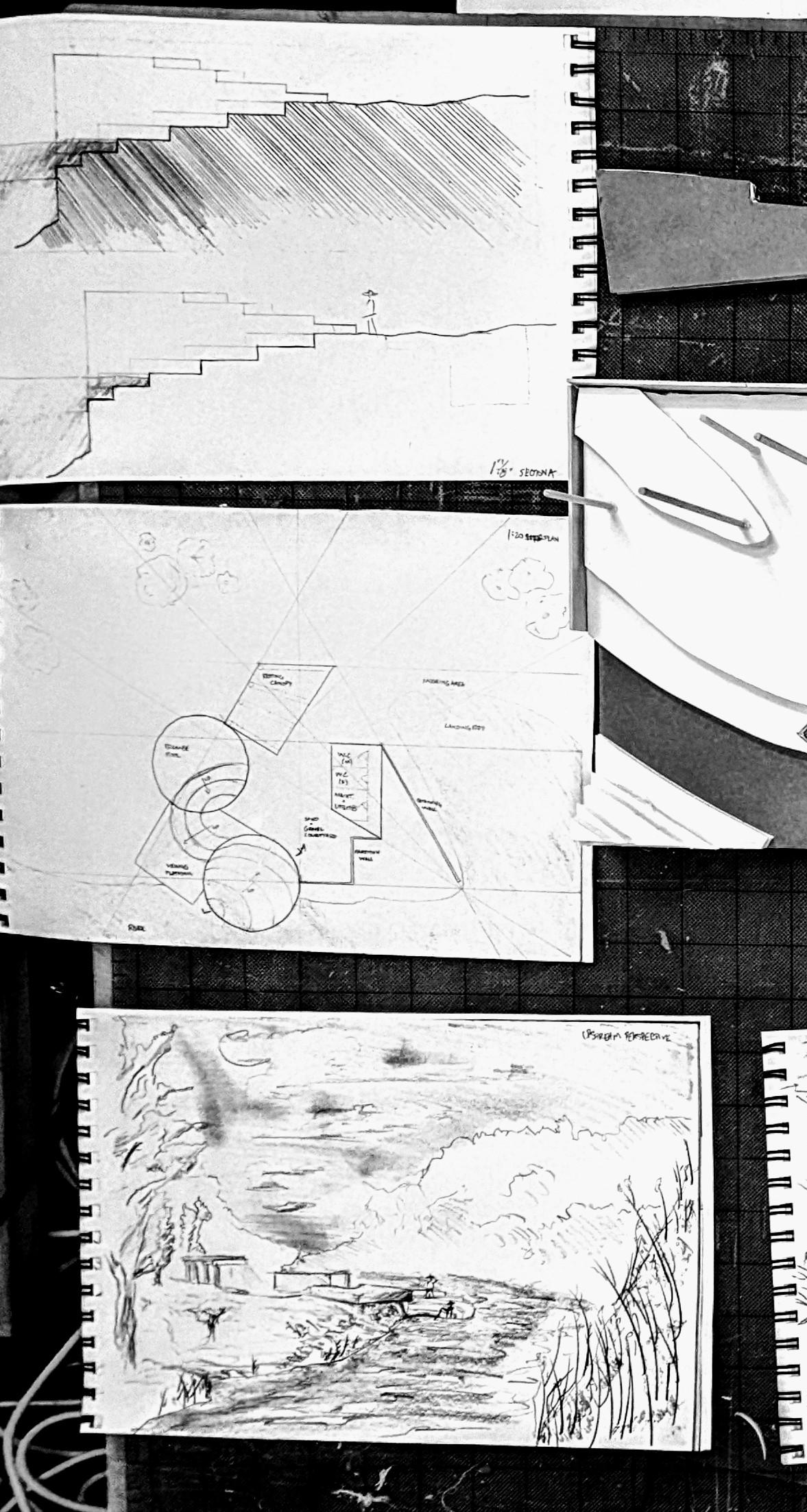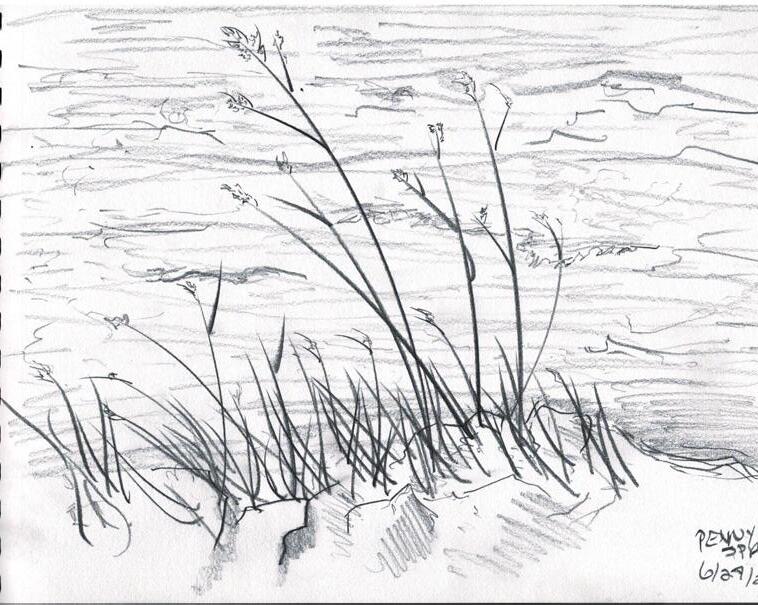
1 minute read
Riverside Waystation
Dates: 6/10/23-7/1/23
Location: Basalt, CO
Advertisement
Client: City of Basalt, CU Denver
Collaborators: HTA, CCY, 1/1
Program: Community Activity Center
Area: 3,500 sq ft
Imagery: Zachary Duncan
Basalt Riverside was a three-week charette to develop a waystation on an outcropping along the Roaring Forks river in Colorado. It is adjacent to a standing wave water feature, local artisanal small businesses, and just upstream from downtown Basalt.
The waystation is a proposal centered around maximizing engagement between the river and the public. All engagement with the site prior to interventions is passive and fleeting. Fishermen and rafters alike spend at most a minute at the site and move on. Activating what is already there and enhancing the capabilities of the site became the goal, met through two major areas: a service space and an activity space.
The activity space consists of a seasonal pier, a viewing deck, and a trombe pool. The service space receives riverborne traffic from an eddy and provides shelter through an overhead canopy and a maintenance, utilities, and W.C. building. Taking advantage of the seasonal variability of Roaring Forks river, the high and low water level alter how the site can be engaged with. The terraced step of a broad platform cascades down to the lower water level, allowing during the low season the public to go out into and onto the river. During high season, the water enters the land.
The negative shadow of the seasonal pier is a trombe pool, lined with smooth black basalt and insulated to allow passive solar heating to provide a warm pool for playful relaxation, much like the many other hot springs and “hippy dip” pools found up and downstream, which are a considerable draw for the public.
Connecting the activity space is a viewing deck that looks out over a standing wave, installed previous to program development.







Guided by precise geometry relevant to the site’s existing characteristics, water itself was formalized into a method of public engagement. The nature and essence of water is movement, always shifting, always alive.


High water level and low water level change how the site can be interacted with. A cascading series of steps descend to the water at low water level, and at high water level, the river is welcomed into the land, changing the site’s characteristics.


Proposals were to be constructed entirely by hand, and construction documentation is to be considered only for the proposals to move ahead.











